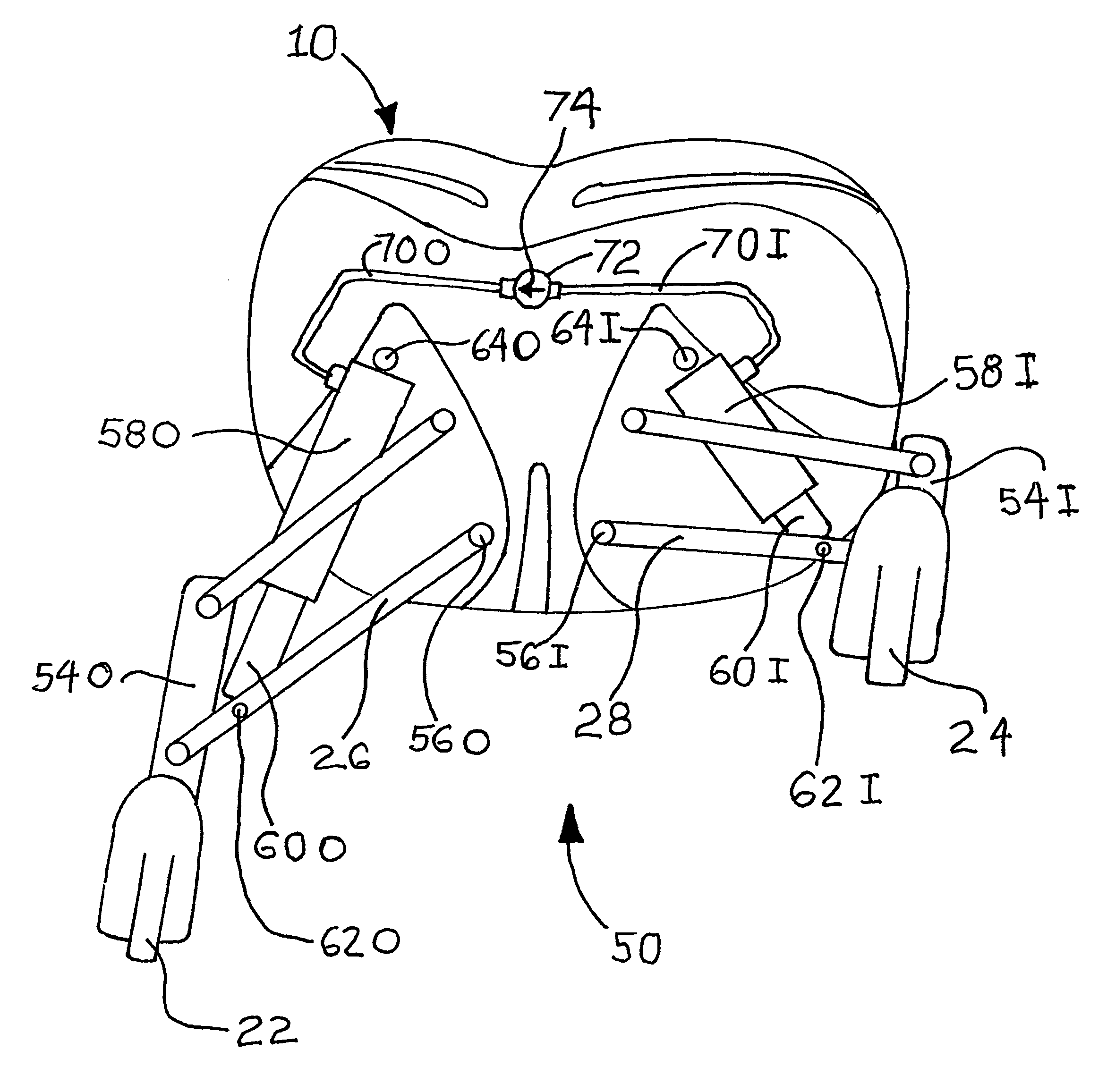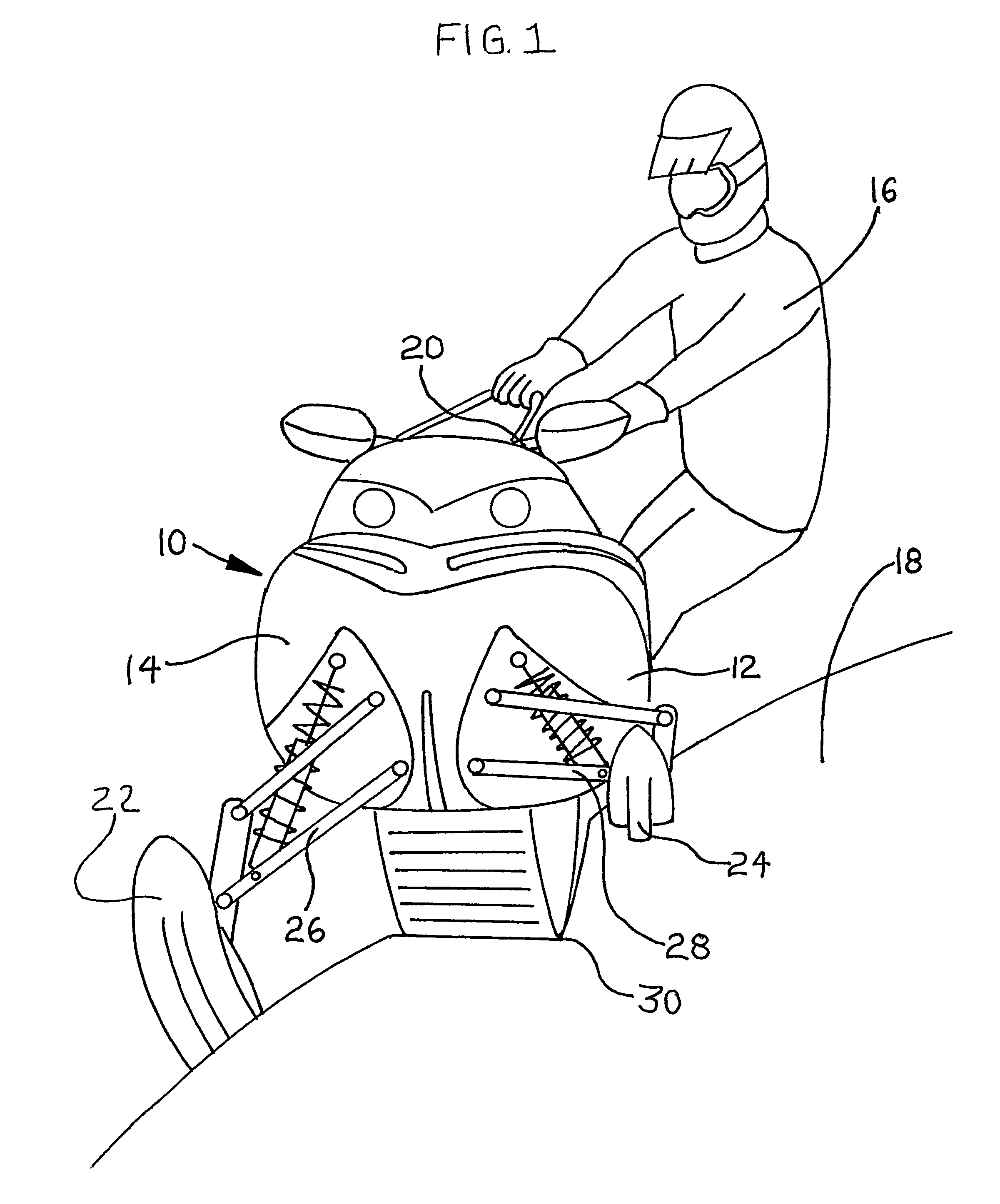Roll enhancing snowmobile ski suspension for deeper snow riding
a snowmobile ski and suspension technology, applied in the direction of suspensions, interconnection systems, sledges, etc., can solve the problems of difficult design of directional control efficient on all surfaces, and achieve the effect of reducing the effort of the rider, reducing the roll resistance of the ski suspension system, and deep snow riding
- Summary
- Abstract
- Description
- Claims
- Application Information
AI Technical Summary
Benefits of technology
Problems solved by technology
Method used
Image
Examples
Embodiment Construction
[0022]It will be obvious to someone experienced in the field of snowmobile design that a multitude of forces are acting on the snowmobile to initiate and maintain the desired inward roll when a deeper snow riding technique is used, not the least of which is the rider's weight shift to the inward side of the centerline of the snowmobile. The new invention acts to creates additional force that would otherwise not occur when using a deeper snow riding technique without the new invention.
[0023]An effective snowmobile ski suspension should have sufficient extension spring force to stop the snowmobile suspension from bottoming frequently in medium and larger bumps. Frequent bottoming causes jarring to the rider and can be detrimental to the snowmobile structure. Commonly two springing mediums are used in today's snowmobile ski suspensions, either traditional helical metal compression coil springs as can be seen on the snowmobile in FIG. 1 or the recently popularized airsprings as can be s...
PUM
 Login to View More
Login to View More Abstract
Description
Claims
Application Information
 Login to View More
Login to View More - R&D
- Intellectual Property
- Life Sciences
- Materials
- Tech Scout
- Unparalleled Data Quality
- Higher Quality Content
- 60% Fewer Hallucinations
Browse by: Latest US Patents, China's latest patents, Technical Efficacy Thesaurus, Application Domain, Technology Topic, Popular Technical Reports.
© 2025 PatSnap. All rights reserved.Legal|Privacy policy|Modern Slavery Act Transparency Statement|Sitemap|About US| Contact US: help@patsnap.com



